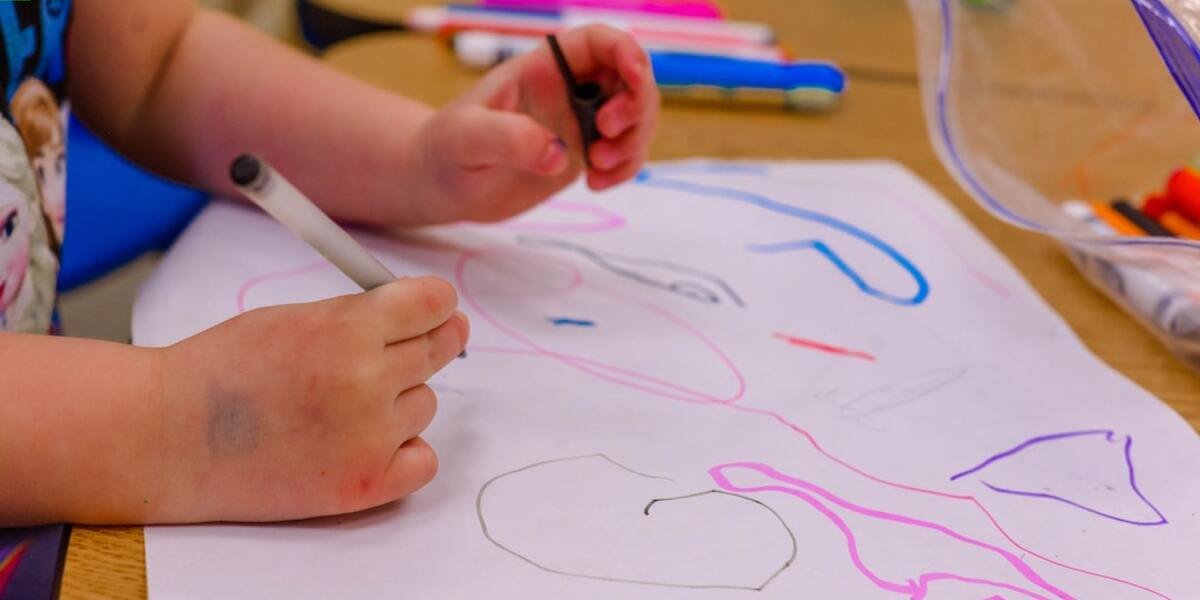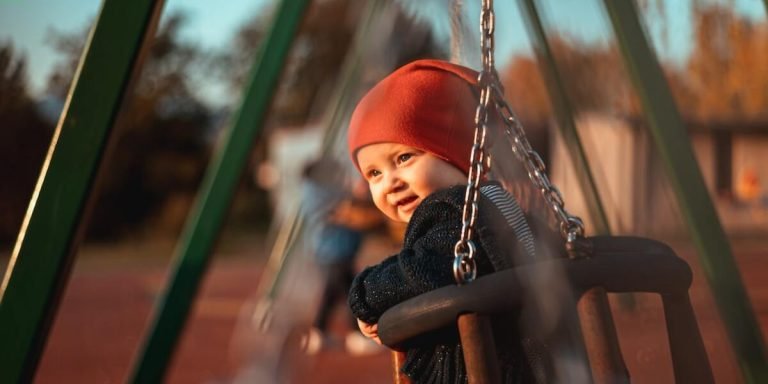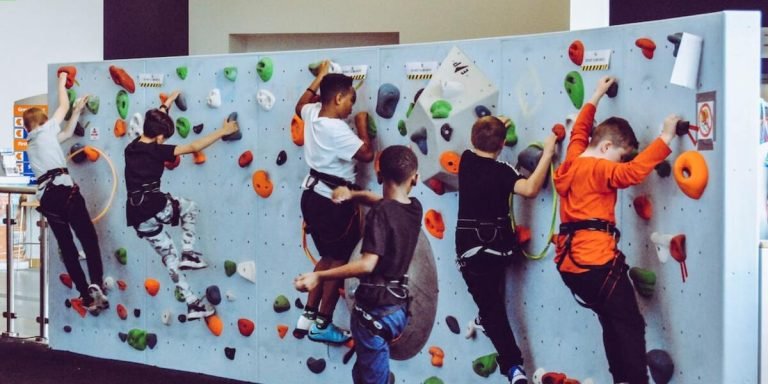Hands on Science: Engaging Young Minds with Interactive Learning
Hands-on science is a remarkable approach to child education that focuses on the principle of learning by doing. The young mind, curious and inquisitive, thrives when given an opportunity not just to watch or listen but also to touch, feel and interact with scientific concepts. Handing over test tubes and petri dishes rather than pencils can be a game-changing twist in your kid’s educational journey.
Activity-based learning plays a pivotal role in enhancing understanding while igniting the spark of curiosity amongst children. Instead of retaining information passively from textbooks or lectures they may forget after exams are done, kids experience living lessons through hands-on science experiments leaving vital imprints on their brains for years ahead.
Did you know?
Did you know that when kids are physically engaged in a learning activity, they understand and retain concepts better? Research shows this hands-on science approach boosts their scientific comprehension by 75%!
The Role of Interaction in Hands-On Science Education
The integration of technology in education has revolutionized the way children learn, and hands on science is one such critical area. At a time when virtual classrooms are becoming a norm rather than exception due to the pandemic era we continue to live in, activity-based learning takes an even higher precedence.
Hands-on science enables students to participate actively in projects besides invoking their thought processes towards creative problem solving. Such interaction plays a crucial role as it encourages students not only understand concepts better but also remain engaged. With technology leading the charge, 3D models or interactive experiments can stimulate curiosity among young learners like never before.
Implementing technologies such as augmented reality (AR), virtual reality (VR) and other immersive tools help simulate real-life scenarios where theoretical knowledge meets practical applications seamlessly – The beauty of today’s tech-led educative methods! Hence these techniques bring alive abstract scientific theories into tangible entities thus making learning more enjoyable for younger minds without diluting educational values.
We should appreciate that every child learns differently; hence tailoring teaching methods will have far-reaching positive impacts on our future generations which no doubt needs highly skilled workforce who come out from well-informed academic backgrounds bolstered by advanced technological support brought right inside their class rooms – at home or schools irrespective!
Therefore integrating ‘hands-on’ with ‘minds-on’, wherein active participation blends smoothly with intellectual engagement facilitated through modern digital platforms: An enchanting symphony creating lasting ripples within childhood education environments across globe evidently aiming towards developing enlightened citizens for tomorrow’s world!
Maximizing Student Engagement Through Experiential Activities
In an era where technology is at the forefront of education, engaging students through experiential activities is more important than ever. It helps in maximizing student engagement especially when teaching hands-on science.
Experiential learning or activity-based learning are powerful educational tools that involve learners actively participating in their instruction. This approach moves beyond traditional textbook-centered teaching and allows children to gain practical experience with concepts they’re studying – be it anything from chemistry experiments to engineering design processes.
The benefits of such a methodology go far beyond just facilitating understanding; by encouraging active participation, we can foster curiosity and creativity among young minds. Students become explorers rather than mere passive recipients of knowledge as they learn how things work practically during ‘hands on’ science sessions which greatly enhances their interest levels for the subject matter being taught.
Participation heightens focus & involvement making lessons memorable while stimulating critical thinking skills necessary for problem-solving scenarios often faced within scientific fields later as professionals.
Fostering Critical Thinking with Collaborative Projects
Given the current digital age, there is a dire need to inculcate critical thinking skills among children. Even more so when it comes to hands-on science education which often requires problem-solving and hypothesis testing. Here’s how we can embed this practice through collaborative projects.
To begin with, technology integration helps foster an environment conducive for group work. For instance, using online platforms that support real-time collaboration on experiments or research signifies its role beyond mere gadget interaction.
Next up are interactive simulations and virtual labs that offer immersive experience of scientific phenomena without physical constraints.These activities not only engage students but also ignite their curiosity about the natural world around them while developing critical inquiry skills – all essential components of effective learning in 2023.
Then come educational games designed specifically for learning purposes or ‘serious games’. These help learners grapple with concepts at their own pace besides fostering teamwork and communication as they work collaboratively solving problems related to hands on science topics.
Moreover, technological tools like mind-mapping software facilitate visualization of ideas thereby encouraging independent thought processes.It allows youngsters outline various hypotheses before commencing any experimental activity , thus reinforcing deductive reasoning abilities .
Lastly,the use of video conferencing tools bring external experts into classroom virtually . This offers fresh perspectives and insights into the topic being learnt further aiding development of analysis-based approach towards knowledge acquisition .
Incorporating Technology into Activity-Based Learning
Incorporating technology into activity-based learning has evolved from being just a trend to an essential part of modern education. Especially in 2023, it’s impossible to ignore the influence and benefits that come with integrating tech tools into classrooms. One such benefit is observed in science classes – where “hands-on” experiments are made more engaging and comprehensive through digital platforms.
Teachers can inspire creativity, innovation, and problem-solving skills amongst young learners by incorporating virtual reality (VR), augmented reality (AR), or even simple smartphone applications during ‘hands on’ science lessons. These advanced technologies not only make complex scientific concepts easier for students to visualize but also offer them unbeatable firsthand experiences which conventional teaching methods may lack.
Activity-based learning powered by technology motivates children towards self-directed exploration while earning their excitement about scientific studies along the way. The hands-on approach encouraged by these technological resources ensures active participation from every student resulting in better retention of knowledge due to experiential learning outcomes produced.
One must remember when we say “technology”, we aren’t merely referring high-end gadgets or unaffordable educational software; rather embracing countless free online resources as well those easily accessible apps available today designed especially for enhancing interactive science activities inside classroom setting.
Enhancing Understanding with Interactive Simulations
Technology integration, particularly in education, has become the new norm. One of the most beneficial applications is using interactive simulations to enhance understanding during activity-based learning. The concept is even more engaging when we incorporate elements like hands-on science into these technology-driven activities.
Interactive simulations bring abstract concepts to life. Using an example from our favorite subject – hands-on science: Children could use an augmented reality app on their tablets or classroom computers for a detailed exploration of plant cells’ inner workings instead of just looking at static images in textbooks.
With such technological tools, children can manipulate objects within this virtual environment and see real-time responses. For instance, they can introduce viruses into this digital plant cell and witness how different parts react – facilitating a rich understanding far beyond rote memorization.
Secondly, it encourages curiosity-led exploration which aligns perfectly with the spirit of hands-on science—students are no longer passive recipients but active participants driving their own learning process by asking questions and seeking answers digitally.
Another significant aspect worth mentioning lies in trial-and-error opportunities offered by interactive simulations—a luxury not often afforded by traditional teaching methods due to time constraints or logistical incapabilities. Students get ample chances to test hypotheses without rigorous physical experimentation setups that usually involve substantial overhead costs; thus enjoying experiential scientific investigation minus some practical hassles.
Utilizing Digital Tools for Real-Time Scientific Discovery
In the era of rapid technological advancement, digital tools have become an integral part of education. Especially in activity-based learning fields like “hands-on science”, these technologies allow for a more interactive and engaging educational experience.
Utilizing digital platforms can aid real-time scientific discovery by providing students with practical knowledge. Rather than merely absorbing theoretical facts from textbooks, children are now being encouraged to participate actively in their own learning process through experimentations aided by technology.
Similarly, augmented reality (AR) enhances hands-on science projects taking it a notch higher beyond everyday experiments’ sophistication level— offering 3D models that simulate complex structures – be they molecular formations or astronomical phenomena! An AR app like ‘Augment Education’ enriches traditional teaching methods considerably making lessons visually appealing while enhancing student engagement levels simultaneously!
There’s also an increasing trend towards incorporating online labs into curriculum frameworks – allowing youngsters access laboratory environments digitally; wherein safely conducted controlled experiments provide valuable insights regarding different natural and physical processes realistically.
Assessing Outcomes of Hands-On Learning in the Sciences
The value of hands-on learning in the sciences cannot be overstated. Particularly with today’s heightened focus on “Technology Integration in Education”, we’re seeing educators prioritize activity-based methods to foster a deeper understanding of scientific concepts among students. However, equally as important is assessing and gauging the outcomes achieved by these approaches.
Hands-on science promotes active participation from learners when exploring various scientific phenomena or technologies, which facilitates comprehensive and experiential learning experiences. It creates an environment where children can experiment, observe results first-hand, draw their conclusions while receiving practical exposure to theory taught during lectures.
Evaluating the effectiveness of such methodology often necessitates varied assessment techniques that capture more than just theoretical knowledge acquisition. Rather than relying solely on traditional testing frameworks — exams measuring memorization skills—we are witnessing broader shifts towards assessments that also consider student creativity, engagement levels throughout lessons implementing Technology Integration strategies, problem-solving abilities applied within real-world contexts directly tied back into their “live” learning experience.
Measuring Skill Development and Conceptual Mastery
In the landscape of childhood education, hands-on science activities have shown significant merits in fostering a deep understanding of scientific concepts and promoting skill development. They provide authentic contexts for learners to apply their knowledge, making it essential to assess outcomes pertaining to these experiences.
One key aspect educators focus on when assessing hands-on learning is skill development. This includes not only procedural skills but also cognitive abilities such as problem-solving and critical thinking. As children engage in experiments or create models, they enhance their ability to follow procedures accurately, make careful observations, analyze data objectively, and draw relevant conclusions – all crucial facets that compose an adept scientist.
A myriad ways exist through which teachers can measure this progression effectively:
1. Observations: Teachers keenly observe students during tasks completion.
2. Reflections: A student’s reflection about what was learned can be insightful.
3.Peer Reviews: Encourages classmates’ feedback encourages communication among peers.
As well as gauging skill improvement another integral part of evaluating hands-on science projects involves conceptual mastery evaluation; ensuring youngsters comprehend fundamental principles behind actions performed rather being preoccupied with activity mechanics itself!
Analyzing Long-Term Impact on Student Achievement
Hands-on science has carved a unique niche in the world of education, especially when we talk about activity-based learning. As educators and parents, it is crucial to realize that our aim extends beyond mere theoretical knowledge acquisition; rather takes into account the long-term impacts on student achievement.
The most significant outcome can be seen in students’ deeper understanding developed through active engagement with scientific concepts. The hands-on experimentation facilitates cognition at an accelerated pace compared to conventional lecture-style teaching methods. For instance, when children actively participate in creating a volcano model or conducting plant-based experiments, they grasp complex ideas more effectively – something books alone fail to offer.
Furthermore, this type of practical involvement also encourages problem-solving abilities and critical thinking skills within learners. These are essential 21st-century skills deemed vital for facing real-world challenges head-on—ultimately contributing towards personal development alongside academic growth.
In terms of fostering interest and enjoyment within young minds toward science subjects—a sector where many schools often struggle—the impact is profound due to hands-on activities being intrinsically engaging than passive listening sessions.
Moreover , these interactive lessons serve as great platforms for nurturing creativity amongst youngsters . They’re allowed unlimited freedom for exploring various possibilities while experimenting , consequently sparking innovative ideas born out of their individual perspectives .
Interestingly enough , but hardly surprising by now , higher performance scores accompanied by improved retention rates have been observed as part of outcomes tied up with hands on sciences incorporated curriculums .
Conclusion
In the ever-changing panorama of education, hands-on science has emerged as a titan, powering up young minds through interactive learning. It is an avenue that transforms abstract concepts into tangible realities and enables children to explore their curiosity while making meaningful connections in the world of science.
Our comprehensive archive provides ample resources for parents and educators alike looking to enhance childhood education quality further. So why pause here? Continue browsing our website for more tips, techniques on educating youngsters effectively and gaining access to extensive parent-educator support networks.
The journey towards shaping enlightened minds never stops – it’s persistent; just like your child’s thirst for knowledge!







